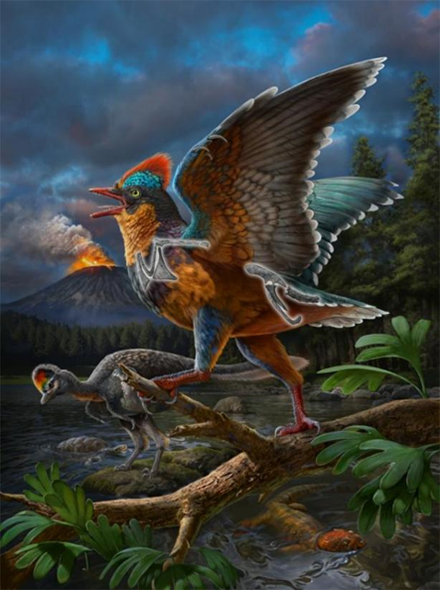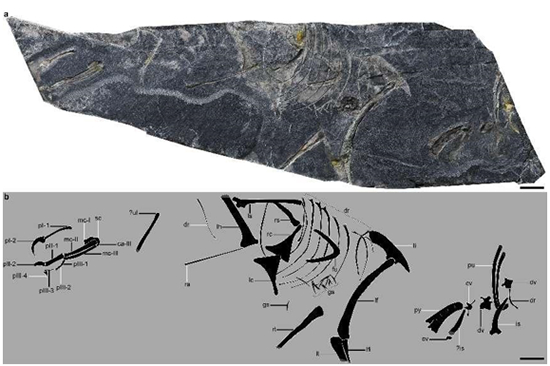
Fig.1 A life reconstruction of the Baminornis zhenghensis and the Zhenghe Fauna
The dinosaurs-to-bird transition undoubtedly represents one of the most dramatic changes in the history of life, involving substantial modifications in skeleton, muscles, integumentary structures, and other biological features. Macro-evolutionary theories suggest that the diversification of bird took place as early as the Jurassic period, but this hypothesis has received little support from the fossil record. The only known Jurassic bird, Archaeopteryx, was discovered in the Late Jurassic of Germany. However, recently some studies have questioned the avian status of Archaeopteryx, suggesting it belongs to the dromaeosaurids rather than birds. Furthermore, the Anchiornithidae and Scansoriopterygidae, which were initially referred to birds, have been reclassified as non-avialan theropods by recent studies. The origin of birds and the earliest stage of birds’ evolution have remained a long-standing topic for evolutionary biologists.
Funded by the National Natural Science Foundation of China (Grant No. 42225201 and No. 42288201), the research team led by Wang Min at the Institute of Vertebrate Paleontology and Paleoanthropology(IVPP), Chinese Academy of Sciences, in collaboration with the Fujian Institute of Geological Survey (FJGS), has conducted a series of studies on the evolution of Late Mesozoic terrestrial ecosystems in East Asia, based on the "Zhenghe Fauna" discovered in Fujian Province. Recently, the research team has made a significant discovery, identifying a new bird species "Baminornis zhenghensis". This is the only known and unambiguous record of a Jurassic bird, pushing the origin of birds back to the late Middle Jurassic (approximately 172–164 million years ago). The discovery rewrites the evolutionary history of birds and highlights the potential of the Zhenghe Fauna in exploring the evolution of Late Mesozoic ecosystems in East Asia.
Additionally, the study reveals that the most unique feature of the Baminornis is the presence of the fused pygostyle, which is widely regarded as the cornerstone of the characteristic body plan of modern birds. In contrast, all the other "potential Jurassic birds" such as Archaeopteryx and Anchiornithidae still have a long reptilian-like bony tail, demonstrating substantial difference from the typical body plan of birds. The discovery of Baminornis reveals that modern birds-like body plan had already appeared in the Late Jurassic (about 150 million years ago), pushing back the initial appearance of this derived feature by nearly twenty million years.
The research was published in Nature on February 13, 2025, under the title “Earliest short-tailed bird from the Late Jurassic of China.” The article can be accessed here: http://www.nature.com/articles/s41586-024-08410-z.

Fig.2 The holotype of Baminornis zhenghensis, with a scale bar of 10 mm in the lower right corner (Image courtesy of Wang Min )

Add: 83 Shuangqing Rd., Haidian District, Beijing, China
Postcode: 100085
Tel: 86-10-62327001
Fax: 86-10-62327004
E-mail: bic@donnasnhdiary.org
京ICP备05002826号 文保网安备1101080035号 Copyright 2017 NSFC, All Right Reserved